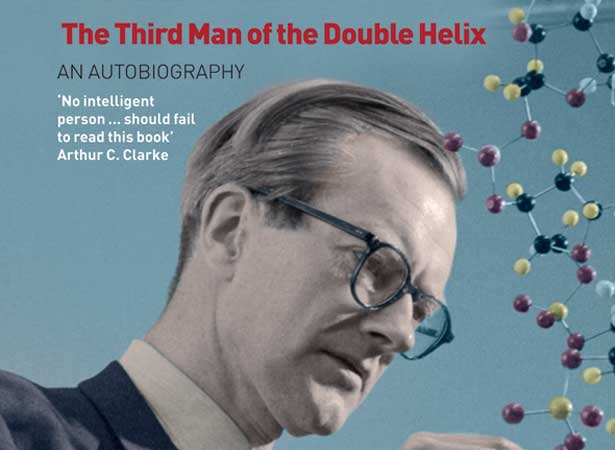
New Zealand-born Maurice Wilkins and his colleagues James Watson and Francis Crick shared the prize for their investigation of the structure of deoxyribonucleic acid (DNA), the genetic molecule found in all organisms. Watson used X-rays to show the shape of the double helix.
Born in the tiny north Wairarapa settlement of Pongaroa, Wilkins moved to Birmingham, England, when he was six. He received his PhD in physics from the University of Birmingham in 1940.
During the early years of the Second World War, Wilkins focused his postgraduate research on improving the cathode-ray screens used in radar and then worked on the separation of isotopes in bombs. In 1943 he moved to Berkeley, California, where he worked on the Manhattan Project, which helped to develop the first atomic bomb. Wilkins later confessed to feeling ‘very disgusted with the dropping of two bombs on civilian centres in Japan’. Disillusioned by nuclear physics and its military applications, he would become involved in the Campaign for Nuclear Disarmament.
In 1946 Wilkins moved into the relatively new field of biophysics. He became a member of the Medical Research Council at King’s College in London, working on the genetic effects of the ultrasound used for medical purposes. He then turned his attention to the use of X-ray diffraction to probe the structure of DNA. The patterns formed by the scattered X-rays showed that the DNA molecule had a double spiral structure.
In 1953, Watson and Crick built on the work of Wilkins and the British physical chemist Rosalind Franklin to deduce the structure of the DNA molecule. This discovery of set the stage for rapid advances in molecular biology over the next 50 years. In the decade that followed Wilkins published a number of papers verifying the Watson–Crick Model. The Nobel Prize was awarded to all three men in 1962. Franklin had died in 1958.
Maurice Wilkins died in 2004.
Read more on NZHistory
External links
How to cite this page
'Maurice Wilkins wins Nobel Prize', URL: https://nzhistory.govt.nz/maurice-wilkins-wins-nobel-prize-in-physiology-or-medicine, (Ministry for Culture and Heritage), updated 8-Oct-2021
